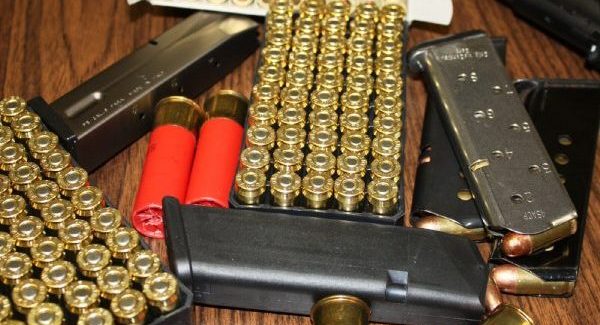
Buoyed by the passage of yet another anti-rights citizen initiative in November, anti-gunners in the Washington Legislature have pre-filed a bill restricting so-called “large capacity magazines” that hold more than ten rounds of ammunition, and many rights activists believe this measure is likely only “Step One” toward a complete prohibition.
House Bill 1068 would “grandfather” existing large capacity magazines but prohibit the future manufacture and sale of these original capacity magazines. It is being introduced at the request of anti-gun state Attorney General Bob Ferguson, a Democrat, and is sponsored by Reps. Javier Valdez, Laurie Jinkins, Christine Kilduff, Monica Jurado Stonier, Mike Pellicciotti, Tina Orwall, and Derek Stanford, all Democrats. Here’s how the bill defines the targeted magazines:
“Large capacity magazine” means an ammunition feeding device with the capacity to accept more than ten rounds of ammunition, or any conversion kit, part, or combination of parts, from which such a device can be assembled if those parts are in the possession or under the control of the same person, but shall not be construed to include any of the following: (a) An ammunition feeding device that has been permanently altered so that it cannot accommodate more than ten rounds of ammunition; (b) A twenty-two caliber tube ammunition feeding device; or (c) A tubular magazine that is contained in a lever-action firearm.”
To Second Amendment activists, the game plan in the Evergreen State appears to be the same as anywhere else restrictive gun control has been pushed into law. It’s being done piecemeal. While current owners can keep their rifle and pistol magazines, there will be restrictions:
“In order to continue to possess a large capacity magazine that was legally possessed on the effective date of this section, the person possessing the large capacity magazine shall possess the large capacity magazine only on property owned or immediately controlled by the person, or while engaged in the legal use of the large capacity magazine at a duly licensed firing range, or while engaged in a lawful outdoor recreational activity such as hunting, or while traveling to or from either of these locations for the purpose of engaging in the legal use of the large capacity magazine, provided that the large capacity magazine is stored unloaded and in a separate locked container during transport.”
Introduction of this legislation has ignited an interesting conversation at the Gun Rights Coalition’s Facebook page.
Washington gun owners are concerned that this is just the tip of the proverbial iceberg. Since 2014, the billionaire–backed gun prohibition lobby in Seattle and its political allies in the state capitol have been pressing various gun control measures ranging from so-called “universal background checks” to raising the minimum age to purchase a semiautomatic rifle to 21 years.
Initiative 1639, which passed in November, classifies every semi-auto rifle in the state as a “semiautomatic assault rifle.” It creates a new felony-level crime called “community endangerment” if an unsecured firearm falls into the wrong hands and is used in a crime. In that scenario, the gun owner would be charged with a crime.
It also mandates a 10-day waiting period on the purchase of a semi-auto rifle, prevents the Department of Fish and Wildlife from advising gun owners that there is a state preemption statute, and requires proof of firearms safety training within the previous five years in order to legally purchase a “semiautomatic assault rifle.”
But the alarm bells are going off around the country because anti-gunners have acknowledged that the state is something of a petri dish for testing gun control schemes that might be tried elsewhere around the country.
Rights activists are watching closely to see whether anti-gunners will succeed in their desire to dismantle Washington’s 35-year-old model preemption statute, and also roll back the state’s “shall issue” concealed carry statute. As of Dec. 1, there were more than 605,000 active concealed pistol licenses in the state.